-
Posts
599 -
Joined
-
Last visited
Content Type
Profiles
Forums
Events
Posts posted by Raviar
-
-
default loadouts re-appear after deleting from ME and launching dcs every time
-
 1
1
-
-
is there any plan for further enhancement of the damage model? compare to other module, its like flying tank, doesnt really receive enough damage compare to something like F-5 against gun
-
 4
4
-
-
Even if that would be possible in some era, We want Super Hero Tomcat, what r u talking about!

I only hope same mindset would not happen to phantom! , example: you cant jam tomcat radar since day 1 after release, or FM, or Phoenix ... and all is because of ED believe me
-
On 1/27/2022 at 4:19 AM, Tengu said:
At 0:55, I see tail code JJ 279.
From a ZOTZ decal sheet, this is Wreckin' Crew. 67-0279 Block 34. First flight in June 1968. Transferred to 388th TFW 34th TFS. Based in Korat, Thailand in 1969. Presumed lost to AAA over Laos June 30, 1970.
Photo below looks like it might be from one of the Squadron books. (It's not from the decal sheet I mention above.)
The HB FAQ does say the classical version would be block 36-45 before anyone takes this YT video becomes an admission of an imminent Thailand-Laos-Vietnam map. (Assuming the hype train hasn't already achieved escape velocity.)
The next map should be something around that area. look here:
-
11 hours ago, Sandman1330 said:
Frederic is correct.
The way around it, if you want ECM only, is to use TMS aft before you are locked up. This gives the ECM consent to transmit in advance, so when you are locked up it will automatically transmit without need for TMS aft. Then you just TMS aft when you want the chaff.
so the CMS aft is not only activate the ECM, but in SEMI and Auto will release automatic program if get locked by radar, and CMS forward will release the selected program in MAN/SEMI/AUTO
-
I believe the CMS aft have to activate the ECM transmission, however on mode 1 and using ALQ-184 long, the Aft release chaff program once the hostile AC spike or once RWR is singer
-
Please, Dont ruin it, get the "accurate" data, not "SME"s like Tomcat regarding phoenix and target size, you know what I mean. Radar, Jamming ... dont make another Tomcat, please
-
 1
1
-
-
On 1/23/2022 at 9:15 PM, Alpenwolf said:
The many restrictions, limitations, never using the same module/unit on both sides (for both IFF and "authenticity" reasons), the emphasis on using comms and rely on teamwork are all as one package of features (among other secondary features) a major aspect of this server, especially, years ago when I started hosting; Less servers back then and most were more or less following the same protocol. On top of that, including a "risky" module like Combined Arms and wrap most missions around it. And that's only due to the fact that the ground warfare is simply part of... war. Hence the various tournaments and encouraging players to get it and test it out. You know, hoping for developers to revisit the module one day and polish some of its surfaces.
I'm not saying other servers were/are bad or anything. That's everyone's different taste in things and the variety of servers these days gives everyone a place to be. For instance, you can't say Pizza is not tasty and frame that as a general opinion. It's your own taste. PERIOD! And those who have been around me for a while know how much I don't care about what others do or why they do it.
In DCS, I kind of found my place in the virtual world of sims/games and I wasn't even looking for one. Then I created my own niche with the MiG-21 and the F-5 being its main modules (after working for quite a while with ACG_IronJockel) hoping to attract enough players who share the same approach towards this great simulator. The best I might add! Yes, simulator, and I treat it as such and prefer to share it with only those who see it as such.
Over the last years of hosting I've always been adding and removing features or making things "harder" in the missions while paying attention to players' feedback. All that to get to a place where players can still have fun without getting bored with fanatic realism as some call it. I had to stop at some point and never push any further. I had to give up and give in many times and just as much players of the Cold War community had to as well. I couldn't implement everything I wanted and players couldn't agree on everything I had, so we ended up meeting in the middle. A common ground that I was trying to get to, where everyone (or most actually) is happy with what they got and able to live without some of the features they'd love to have (you can't have everything and please everyone, so I never bothered about the latter). And that's when the server's become what it is with the standard features it has.Now, talking about bringing players back. I've always said this: One day there will be a new and a different generation of players in DCS that will certainly approach this simulator (or game?) differently. And quite often such a change scares off some OG's of not just DCS, but any game. It's like a company or a brand that is known for something and one day they change a few features to attract more customers (which is very legit from a product provider's point of view), so they end up gaining more and new followers/players/customers/etc. on the cost of losing older ones, who then end up reminiscing the good old days and wishing for things to go back to what they once were. Well, they're not
 That's the nature of things and DCS is just one example.
That's the nature of things and DCS is just one example.
That being said, I'm never ever changing any of the major features of any of my missions to get anyone attracted to the server. I don't use social media and I'm not interested in having followers or numbers or likes or whatever is out there in that regard. I simply love DCS the way I do and had many players like me throughout the years with whom I've shared many beautiful and intense sessions. If I'm outdated or my missions don't attract the new waves of new DCS players, who think of my missions and server rules to be too tough or too whatever, so be it. And that's not me being stubborn, as some say, but simply me wanting to enjoy DCS the way I want to enjoy it. That's all there is to it, mate, and I understand your concern.
The server is still online and is still running. For how long? Who knows... That's something not very foreseeable.
God bless you all!
Fly safe!your server, your missions are the best for the last 5 /6 years as I am flying in it. keep it up
-
 5
5
-
-
As per title, it is frustrating to turn off the AC for refueling and rearming, would be great if ED can add the functionality
-
 5
5
-
 2
2
-
-
-
5 hours ago, norman99 said:
This issue is extremely frustrating, as it basically breaks TWS multi-launch functionality.
As soon as the first missile is launched, the radar instantly creates a track file for the outgoing missile , and re sorts the tracks. Using the NWS/undesignate button to step to the next target selects the missile instead. Launching on more than one target therefore becomes almost impossible, as the TDC cursor has to be used, extremely difficult in a time critical situation.
It should not work this way, it’s literally what track file priorities and the NWS/undesignate button are designed for.
Whilst I’m no expert, I’m extremely sceptical about the ability to track (or at least display) outbound missiles. Why have the missile fly out cue and associated symbology, if that is the case?
Hope ED can fix it soon, however it is in investigation stage right now, you never know how complex it can be for the developers team, hopefully they aware of the problem(s) internally and they will plan for the fix(es).
-
 1
1
-
-
AGM-65E and AGM-65L are the laser guided mavericks, in DCS E carried by Harrier and Hornet, L carried by A-10CII and Harrier
-
18 minutes ago, Gronank said:
This is a breaking change: All missions in existence would not have datalink enabled if this change was made. It is a minor annoyance that the mission designer has to see EPLRS for things that are not EPLRS, but this change is worse than doing nothing.
not really, the current functionality can be renamed as D/L, added functionality can be on by default, unless the designer turned it off! however the ED developer have to look into it, it can be more complex as it sounds like IF the other functionality is already in place which I doubt
-
Well, Well, Well
Some YouTuber and some people gave very weird speculation, like: the bagram coordinate can be the AirCraft on the Ramp and so on
I found what I am going to share back to year ago, however I waited until ED announce it, I was not sure if its a good idea to leak it or not!
its always interesting to read some lua and search in the maps!
the base of any maps in DCS is Caucuses and Nevada NTTR is the base of the PG and most of the next desert maps.
You can find the hints in the PG map about the new Maps, and you could find it is going to be Afghanistan, it was not new to me but how?! dont have high hopes, Afghanistan is a huge land, we may get 30% to 50% of the whole country!
as we know base on 2022 video, Paris and London are going to be new map or extension of Normandy!
BUT, what is going to be the next map?
look at the pictures below, you will get the idea, basically in Object Oriented World, developers try to build framework and work on top of it.
So Syria will be the base of the new map as well as Marianas!-
 1
1
-
 1
1
-
-
5 minutes ago, Northstar98 said:
Yes.
As mentioned in my OP, EPLRS is a position reporting system for US Army ground vehicles.
SADL is the data link, and those coordinate with EPLRS.
Right now, DCS uses the EPLRS task to not only control EPLRS, but also data links generally, even for units that don't have SADL or EPLRS.
So to that end, it would be better to have the current EPLRS task to be renamed as 'data link using', as that better describes what the task actually does in the majority of the cases.
Even better than that would be to have a separate EPLRS and 'data link using' task, obviously unit specific.
actually, i think ED might need to add different DL in advanced mission (the available ones in DCS), not rename the EPLRS
-
EPLRS is not datalink, datalink use EPLRS
-
On 12/29/2021 at 10:50 PM, Tenkom said:
That sounds like a weird design flaw. What if there is a malfunction on one of the tanks?
its not design flaw, plane which can load asymmetric loadout are very rare ! most of the plane will load symmetric, hornet has great ability!
-
honestly we cant use this radar! please do something !
-
 1
1
-
-
1 hour ago, Pilot Ike said:
Which sensor / pod and weapons do we see in the videos above?
please read the description of the video
OPERATION MOUNTAIN MAST: A NEW STRIKE ON THE BUSHEHR REACTOR The Iraqis had unintentionally attacked the Bushehr nuclear plant with an Exocet back in 1984, several planned strikes had followed between 1985 and 1986 in order to hamper repair works. However, by mid-1987, Iraqi intelligence had received information about the arrival of a West German team of experts from the Kraftwerk Union company with the intention of conducting a preliminary assessment to evaluate damage and determine what would be needed for rebuilding. In response, Saddam had quickly scheduled a meeting with the IQAF command where he ordered Lt. Gen. Hamid Shaaban to plan a massive operation to deliver a definitive blow to the reactor. The Iraqis faced a dilemma though: they did not have a suitable bomb to penetrate the two- meters-thick concrete wall of the reactor's dome. Negotiations carried out in France to obtain the 1,000-kg LGB Arcole had not been successful, as this bomb was still in the process of being tested and its use in Iraq was not feasible. The Iraqis had then contacted several other companies which produced high penetration ordnance and had found the Spanish EXPAL BR-1000 bunker- busting bomb to be a suitable option. This time, aiming at maximizing the damage inflicted on the plant, the Iraqi Mirages would carry out a three-wave attack conducted over a period of two days, scheduled as follows: First wave (17 November 1987, 09:00) A total of 20 Mirages from the 79th and 91st squadrons would take part in the first stage of the operation: A) Take-off Jalibah airport: 8 striking mirage F1.EQ-4s (+2 reserve). loadout: Two BR-1000 LD high penetration bombs (0,25-sec delay fuse), one 2,200L EFT, Remora ECM pod, Sycomor chaff & flare dispenser, two Magics and DEFA 30-mm cannon (250 rounds). -Ten Mirage F.1EQ-4 as tankers. Loadout: Two 1,160 L EFTs, Intertechnique refueling pod, two Magics, Remora ECM pod, Sycomor chaff & flare dispenser and DEFA 30-mm cannon (250 rounds). B) Take-off Artawi airport: Four escorting MiG-23MS. Second wave (17 November 1987, 16:00) -Two striking Mirage F.1EQ-5s (+1 reserve) from the 81st Squadron. Loadout: One AS.3OL missile, ‘Patrick' laser pod, two Sycomor chaff & flare dispensers (gondola version), one 1,160 L EFT, two Magics and DEFA 30-mm cannon (250 rounds). -Two escorting Mirage F.1EQ-4s from the 89th Squadron. Loadout: Two Magics, two Super 530Fs, two Remora ECM pods and one 1,160 L EFT. Third wave (19 November 1987, 07:00) - Four striking Mirage F.1EQ-4s (+1 reserve) from the 79th Squadron. Loadout: as in the first wave. As in the first wave. - Five Mirage F.1EQ-4s as tankers. Loadout: In order to rehearse the mission, Iraqi engineers built up a similar target west of Saddam AB where iraqi pilots usually ran training exercises.On 16 November, the final briefing took place in the base operations room using 1:500000 maps of the target area. Finally, at 09:00 on 17 November 1987, the first wave took off from Jalibah airport. Given the high number of Mirages taking part in the operation, the pilots followed a sequential departure where each attack Mirage took off followed by a tanker in order to minimize delay. After completing the departure process, the planes flew towards Bubiyan Island at an altitude of 20 m and 900 km/h, while two MiG-23MS diverted to Kharg at medium altitude to draw the attention of any possible CAPs controlled Bushehr radar. Thirty seconds before reaching the refueling point, the formation decelerated to 510 km/h and then the refueling process started, during which each the eight strike planes were fed 2,000 L by the tankers. During the refueling, however, No.8 suffered a malfunction and had to be substituted by Capt. N. N. The tankers then returned to Jalibah AB, along with No.8, and the formation continued to fly in total radio silence at 20 m and 960 km/h. Some minutes later, the eight Mirages, led by Maj K. S. M., reached the IP, where they split in two groups of four.
They then turned towards the PUP, increased the speed to 1,000 km/h and opened weapon's switches. After reaching the PUP, the first four planes climbed to 1,700 m, one by one, at the same time that the Iranian AAA started to open fire. At this point, the first four planes employed the Sycomor pods, releasing chaff and flares at the same time they dropped the ordnance on Reactor- 2's dome in a 30-degrees' dive maneuver. The bombs started to fall, damaging the incomplete structure which burst into flames. After the last e Mirage (No.4), piloted by Capt. K. H., had released his 1,000-kg bombs, the formation leader ordered the other four Mirages to pull-up, using again the Sycomor to confuse the anti-aircraft. Following the same bombing procedure, this second group dropped their bombs on Reactor-1 at 11:45 and left the area completely unscathed. Then, the eight pilots headed for Basra at 960 km/h at an altitude of less than 30 m above sea level. Approaching Mina Al Bakr, the formation climbed to 3,000 m, rendezvoused with two MiG-23MS' and one MiG- 25PDS and finally landed at Jalibah airport.
On the same day, at 16:00, the second wave took off from Al Shuaiba AB towards the Gulf. At front, two EQ-5s from the 81st Squadron flying at just k 20 m over the water. Just a few kilometers behind, two EQ-4s led by Capt. Khalaf Ahmed flying at 200 m while keeping an eye for any possible interception. Approaching Bushehr from the west at 970 km/h and 40 m of altitude, the EQ-5 piloted by Lt. M. N. locked the 'Patrick' at 13 km from the target and then climbed abruptly from 40 to 300 m to get a better view of the objective. The imposing concrete dome of Reactor-1 appeared on the VRT-150 scope encircled by giant cranes and buildings under construction. At a distance of 9.5 km, Lt. M. N. launched his AS30L and smoothly turned to the left to ensure an accurate hit. By the book. A few seconds after, exactly at 16:45, the missile pierced the dome like cheese and exploded inside. No.2, in turn, targeted Reactor-2 and then both jets returned safe to Al Shuaiba AB.70 Two days later, a third wave of four striking Mirage F.1EQ-4s (+1 reserve) would repeat the same strike early in the morning, being escorted by two MiG-23MLs and one MiG-25PDS, first during the refueling process, and then also on their way back to Jalibah airport. Some hours later, reconnaissance imagery from a MiG-25RB would ha show the devastating effects of the attacks-
 3
3
-
-
-
Footage and the detailed description of the attack
-
OPERATION MOUNTAIN MAST: A NEW STRIKE ON THE BUSHEHR REACTOR The Iraqis had unintentionally attacked the Bushehr nuclear plant with an Exocet back in 1984, several planned strikes had followed between 1985 and 1986 in order to hamper repair works. However, by mid-1987, Iraqi intelligence had received information about the arrival of a West German team of experts from the Kraftwerk Union company with the intention of conducting a preliminary assessment to evaluate damage and determine what would be needed for rebuilding. In response, Saddam had quickly scheduled a meeting with the IQAF command where he ordered Lt. Gen. Hamid Shaaban to plan a massive operation to deliver a definitive blow to the reactor. The Iraqis faced a dilemma though: they did not have a suitable bomb to penetrate the two- meters-thick concrete wall of the reactor's dome. Negotiations carried out in France to obtain the 1,000-kg LGB Arcole had not been successful, as this bomb was still in the process of being tested and its use in Iraq was not feasible. The Iraqis had then contacted several other companies which produced high penetration ordnance and had found the Spanish EXPAL BR-1000 bunker- busting bomb to be a suitable option. This time, aiming at maximizing the damage inflicted on the plant, the Iraqi Mirages would carry out a three-wave attack conducted over a period of two days, scheduled as follows: First wave (17 November 1987, 09:00) A total of 20 Mirages from the 79th and 91st squadrons would take part in the first stage of the operation: A) Take-off Jalibah airport: 8 striking mirage F1.EQ-4s (+2 reserve). loadout: Two BR-1000 LD high penetration bombs (0,25-sec delay fuse), one 2,200L EFT, Remora ECM pod, Sycomor chaff & flare dispenser, two Magics and DEFA 30-mm cannon (250 rounds). -Ten Mirage F.1EQ-4 as tankers. Loadout: Two 1,160 L EFTs, Intertechnique refueling pod, two Magics, Remora ECM pod, Sycomor chaff & flare dispenser and DEFA 30-mm cannon (250 rounds). B) Take-off Artawi airport: Four escorting MiG-23MS. Second wave (17 November 1987, 16:00) -Two striking Mirage F.1EQ-5s (+1 reserve) from the 81st Squadron. Loadout: One AS.3OL missile, ‘Patrick' laser pod, two Sycomor chaff & flare dispensers (gondola version), one 1,160 L EFT, two Magics and DEFA 30-mm cannon (250 rounds). -Two escorting Mirage F.1EQ-4s from the 89th Squadron. Loadout: Two Magics, two Super 530Fs, two Remora ECM pods and one 1,160 L EFT. Third wave (19 November 1987, 07:00) - Four striking Mirage F.1EQ-4s (+1 reserve) from the 79th Squadron. Loadout: as in the first wave. As in the first wave. - Five Mirage F.1EQ-4s as tankers. Loadout: In order to rehearse the mission, Iraqi engineers built up a similar target west of Saddam AB where iraqi pilots usually ran training exercises.On 16 November, the final briefing took place in the base operations room using 1:500000 maps of the target area. Finally, at 09:00 on 17 November 1987, the first wave took off from Jalibah airport. Given the high number of Mirages taking part in the operation, the pilots followed a sequential departure where each attack Mirage took off followed by a tanker in order to minimize delay. After completing the departure process, the planes flew towards Bubiyan Island at an altitude of 20 m and 900 km/h, while two MiG-23MS diverted to Kharg at medium altitude to draw the attention of any possible CAPs controlled Bushehr radar. Thirty seconds before reaching the refueling point, the formation decelerated to 510 km/h and then the refueling process started, during which each the eight strike planes were fed 2,000 L by the tankers. During the refueling, however, No.8 suffered a malfunction and had to be substituted by Capt. N. N. The tankers then returned to Jalibah AB, along with No.8, and the formation continued to fly in total radio silence at 20 m and 960 km/h. Some minutes later, the eight Mirages, led by Maj K. S. M., reached the IP, where they split in two groups of four.
They then turned towards the PUP, increased the speed to 1,000 km/h and opened weapon's switches. After reaching the PUP, the first four planes climbed to 1,700 m, one by one, at the same time that the Iranian AAA started to open fire. At this point, the first four planes employed the Sycomor pods, releasing chaff and flares at the same time they dropped the ordnance on Reactor- 2's dome in a 30-degrees' dive maneuver. The bombs started to fall, damaging the incomplete structure which burst into flames. After the last e Mirage (No.4), piloted by Capt. K. H., had released his 1,000-kg bombs, the formation leader ordered the other four Mirages to pull-up, using again the Sycomor to confuse the anti-aircraft. Following the same bombing procedure, this second group dropped their bombs on Reactor-1 at 11:45 and left the area completely unscathed. Then, the eight pilots headed for Basra at 960 km/h at an altitude of less than 30 m above sea level. Approaching Mina Al Bakr, the formation climbed to 3,000 m, rendezvoused with two MiG-23MS' and one MiG- 25PDS and finally landed at Jalibah airport.
On the same day, at 16:00, the second wave took off from Al Shuaiba AB towards the Gulf. At front, two EQ-5s from the 81st Squadron flying at just k 20 m over the water. Just a few kilometers behind, two EQ-4s led by Capt. Khalaf Ahmed flying at 200 m while keeping an eye for any possible interception. Approaching Bushehr from the west at 970 km/h and 40 m of altitude, the EQ-5 piloted by Lt. M. N. locked the 'Patrick' at 13 km from the target and then climbed abruptly from 40 to 300 m to get a better view of the objective. The imposing concrete dome of Reactor-1 appeared on the VRT-150 scope encircled by giant cranes and buildings under construction. At a distance of 9.5 km, Lt. M. N. launched his AS30L and smoothly turned to the left to ensure an accurate hit. By the book. A few seconds after, exactly at 16:45, the missile pierced the dome like cheese and exploded inside. No.2, in turn, targeted Reactor-2 and then both jets returned safe to Al Shuaiba AB.70 Two days later, a third wave of four striking Mirage F.1EQ-4s (+1 reserve) would repeat the same strike early in the morning, being escorted by two MiG-23MLs and one MiG-25PDS, first during the refueling process, and then also on their way back to Jalibah airport. Some hours later, reconnaissance imagery from a MiG-25RB would ha show the devastating effects of the attacks-
 4
4
-
 2
2
-
-
-
Two IQAF(Iraq Air Force) Mirage F1 EQ-5 from 81st Squadron departed from Saddam AB at 31st July 1986, The 1st equiped with two Magic, two AS30L and Patrick laser pod, the 2nd equiped with two Magics, two Super530Fs, Remora/Sycomor pods and 1,160L external fuel tank, due to the mountain topology it was a hard target, approached the bridge from northeast at 820 km/h at 4000m, dived to 2700m and locked the pod on the bridge deck at a distance of 8.7km at 1900m, at 6.4km from the target he fired the AS30L missile. Iraq previously attacked with Su-22 and been able to damaged it lightly.
-
 6
6
-
 2
2
-



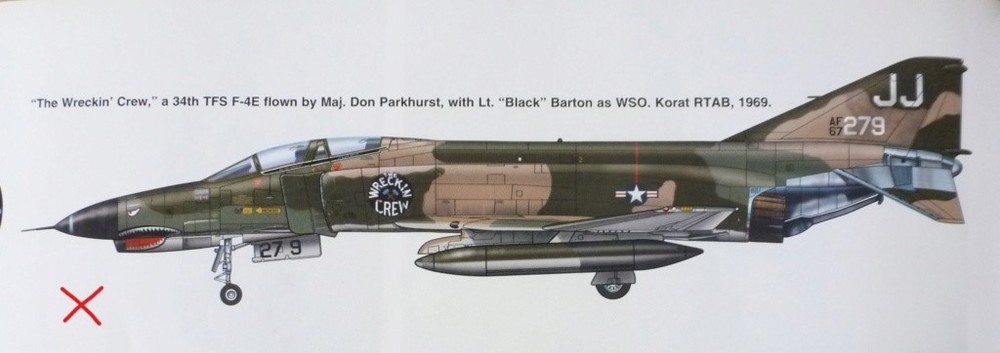

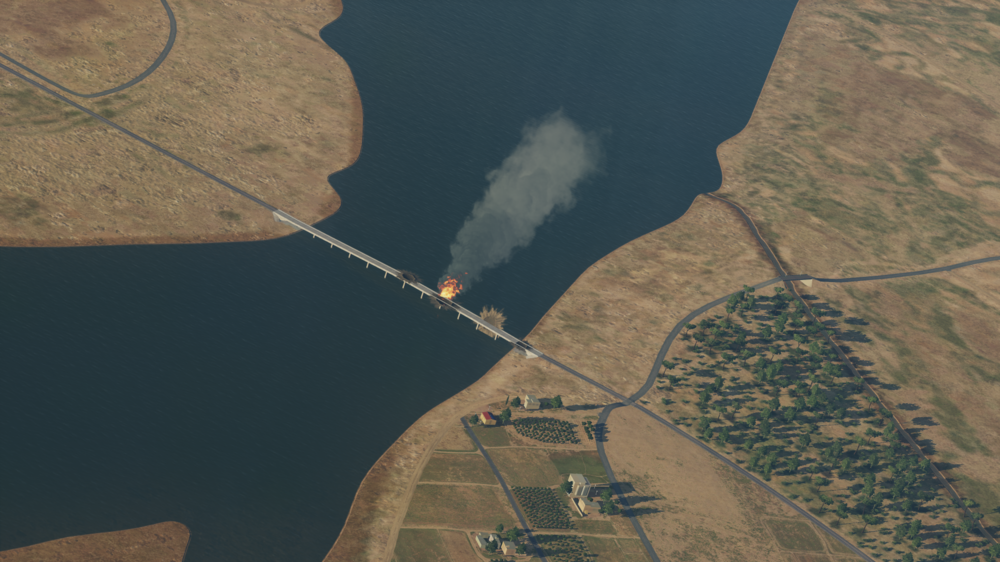

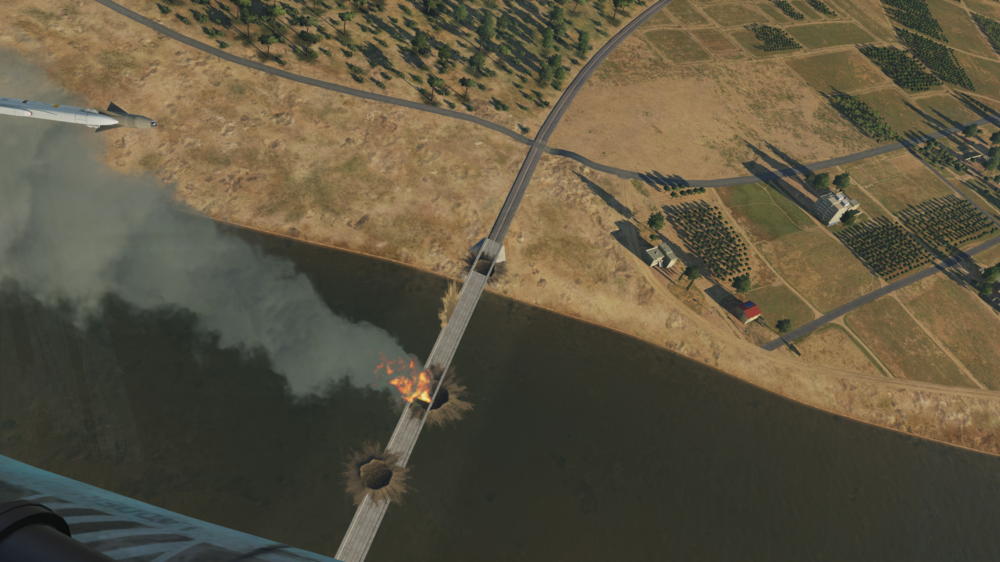
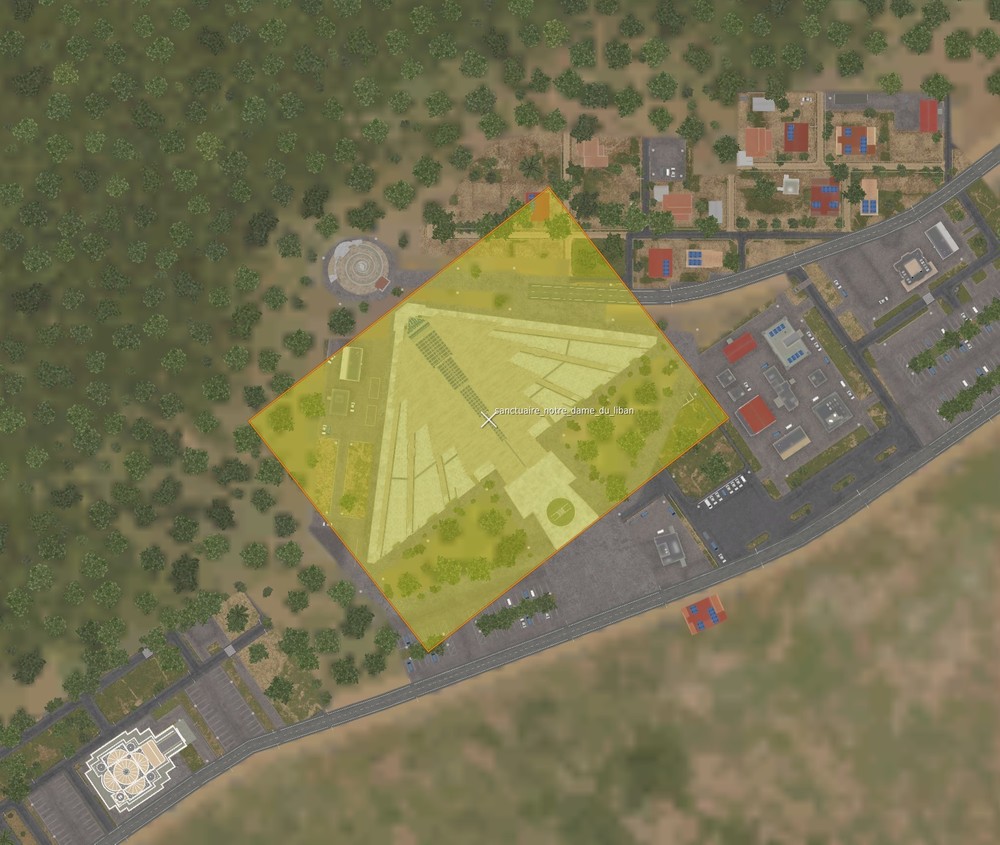

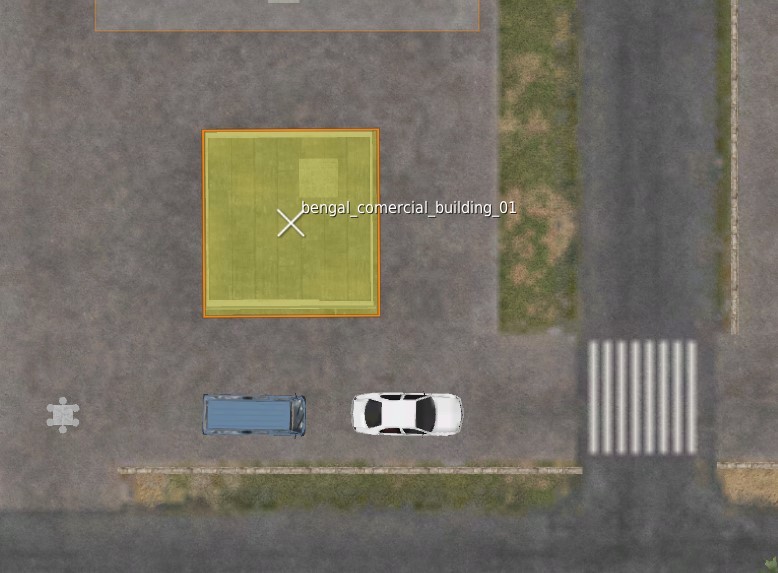
DCS: Eurofighter Mini-Update - The New Office
in DCS: Eurofighter
Posted
This is amazing HB, I cant wait for such quality on Phantom